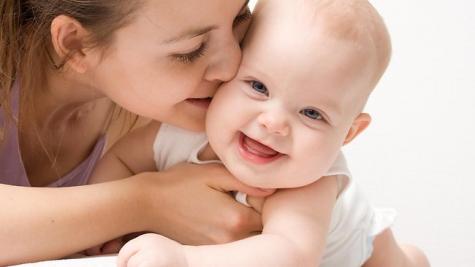A study from the Institute of Child Health at Bristol University in the UK has confirmed the 'hygiene hypothesis' which suggests that children who are too clean are more susceptible to developing allergies and asthma.
In this study that looked at more than 11,000 children, it was found that children of parents with the highest standards of cleanliness are up to three times more likely to develop allergies and skin problems such as eczema. The study found that children with eczema were most likely to be the cleanest and the most washed.
Experts believe that higher levels of hygiene are contributing to the rise in allergies and asthma because the immune system ‘fails to wake up’ and that early exposure to germs gives children protection against developing allergic conditions. The so-called 'hygiene hypothesis' - which some scientists challenge - suggests coming into contact with simple grime and dirt may actually be good for you as it stimulates the immune system.
“The bottom line is that hygiene is important to prevent disease and illness, but too much disinfection may actually have a negative effect for some kids,” says Australian dermatologist, Dr Ann-Maree Kurzydlo.
“Obviously genetic factors are still the main culprit when it comes down to the root cause of eczema and allergies but over-bathing, including the use of anti-bacterial soaps and regular use of hand sanitizers, may be doing more harm than good.”
What is eczema?
- It is a common skin condition that usually begins before a baby turns 12 months old. The affected skin is dry, red and itchy. Sometimes these areas of the skin can become cracked, weepy and scab over.
- It has tripled in Australia during the past three decades.
- Up to 30% of children and 10% adults are affected.
- The condition can be debilitating and a constant source of irritation, pain and, in some cases, embarrassment. People with eczema are likely to require continuing treatment to manage the condition.
- The Eczema Association of Australasia has stated that 20% of people will develop eczema before the age of five.
What are the symptoms in children?
- Babies usually have a red, dry rash on their face. The rash is sometimes on their scalp, behind their ears, on their body and arms and legs. The rash is very itchy.
- In toddlers and older children, the rash is often in the skin creases around the knees, wrists, elbows and ankles.
- Eczema can involve any part of the surface of the skin and in some children the rash can cover the entire skin.
- You will notice that at times your child's skin is well controlled and at other times it gets worse. It is common for the eczema to fluctuate, which is why it is important to manage the eczema effectively and control it as soon as it flares up.
What can be done to relieve symptoms?
- At present, 56% of moderate to severe eczema sufferers have some sort of filaggrin deficiency which means a break down of the skin barrier.
- Using a moisturising product which puts moisture back into your skin and helps increase skin barrier integrity. It may help skin to manage and repair eczema damage. One recommended product is Cetaphil Restoraderm which is available online or at selected pharmacists.
- Sufferers of eczema are advised to avoid soaps, detergents, shampoos and abrasive cleaners, use emollients regularly and wear protective gloves when washing or using cleaning products.
You should see your medical practitioner for a diagnosis and recommended management of eczema.


















__small.png)










